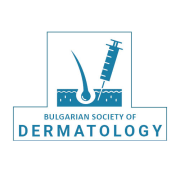

Author(s): Saifuddin Sheikh, Ateeq Ahmad, Shoukath M Ali, Moghis U Ahmad, Mahesh Paithankar, Dipak Saptarshi, Prashant Kale, Kirti Maheshwari, Hemant V Barkate, Pathak HL, Mohammad Mushtaq and Imran Ahmad
Objectives: To compare the safety and efficacy of MorrF (combination of Minoxidil [5%]+Finasteride [0.1%] lipid solution) with Minoxidil (5%) solution in adult male patients suffering from Androgenetic Alopecia (AGA).
Background: AGA is one of the three most common forms of non-scarring alopecia with approximately 95% of hair loss cases in men and women. Fifty percent of men by age 50 years exhibit some degree of AGA. Currently there are two effective treatments available for the treatment of AGA in men: topical Minoxidil and oral Finasteride. Clinical studies have demonstrated that both Minoxidil and Finasteride have well established therapeutic effect in the management of AGA.
Materials and methods: Safety study in rats was carried out for 28 days with topical application of MorrF twice a day for 28 days. Human Pharmacokinetics (PK) and efficacy study was conducted in male patients suffering from Androgenetic Alopecia. PK parameters were determined after 2 weeks of MorrF administration. For efficacy study patients were randomized to receive either MorrF or Minoxidil (5%) alone for 24 weeks. Patients administered 1 mL of the either solution twice day on the effected part of the scalp.
Results: Topical treatment of MorrF was found to be well-tolerated in rats and humans. Pharmacokinetics study in human showed the steady state Cmax,ss and exposure (AUC0-τ,ss) for Minoxidil to be 2.7 ng/mL and 19.3 ng.h/mL respectively whereas the steady state maximum Finasteride concentration (Cmax,ss) was 0.6 ng/mL and exposure (AUC0-τ,ss) of Finasteride was found to be 6.3 ng.h/mL. Significantly more patients treated with MorrF showed greater improvement in Investigator score (65% vs. 26%), global photographic assessment (89% vs. 60%) and patient’s self-assessed questionnaire as compared to Minoxidil alone.
Conclusion: Topical formulation of MorrF was shown to have clinically significant improvement in terms of hair growth as compared to Minoxidil (5%) alone.